
Any of you that have read my columns probably know that I was something of an optics snob when I began. One might even say a Princess, which is an easy attitude to have when Uncle Sugar is buying your toys. Even at that though, I must admit Uncle failed us a few times with the old “Conglomerate Corp gets the contract, and immediately quality goes to crap, and then they offer to fix it for more $$$$$”. Lots more, the old military industrial complex special. But that attitude really started changing just about a year ago with my review of the Primary Arms SLx MD-25.
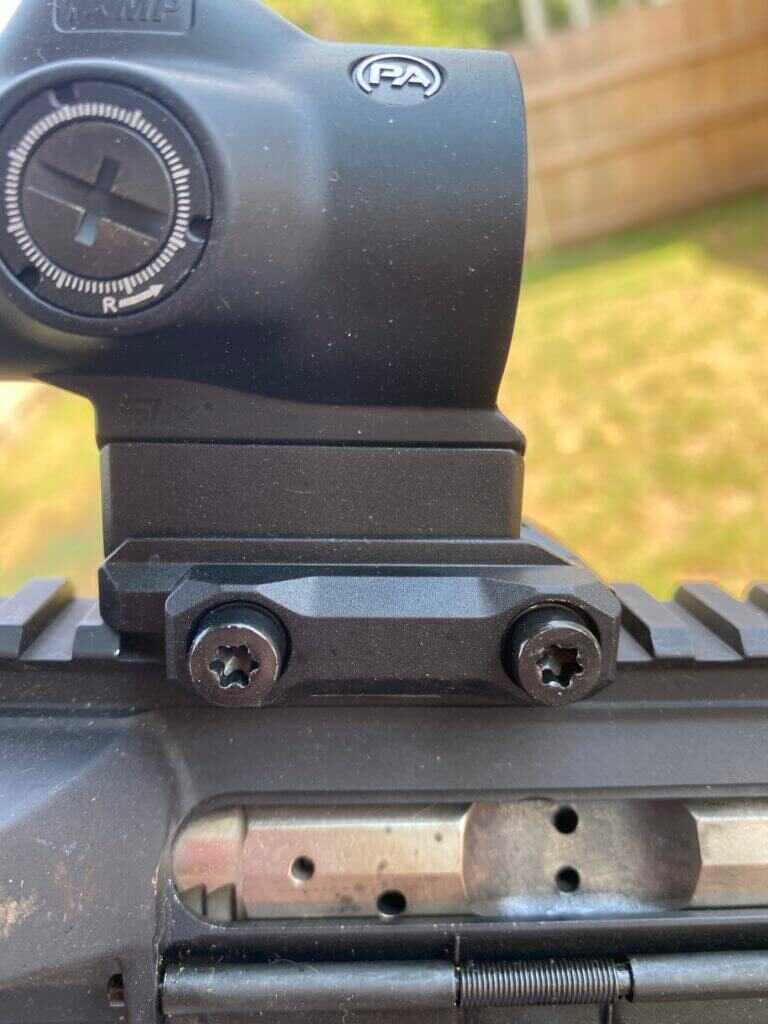
Not only did the MD-25 perform, but it also passed odd things like a tracking test better than some $800 red dots. And even if I had been initially skeptical of the MD-25 at a price point of $169.00, I am not now. I kept that optic and put it on one of my training guns. This means it has had almost daily use since, as I had a range in my backyard for most of 2020/21. This means I can tell you now that it has held up magnificently and is well worth the money.
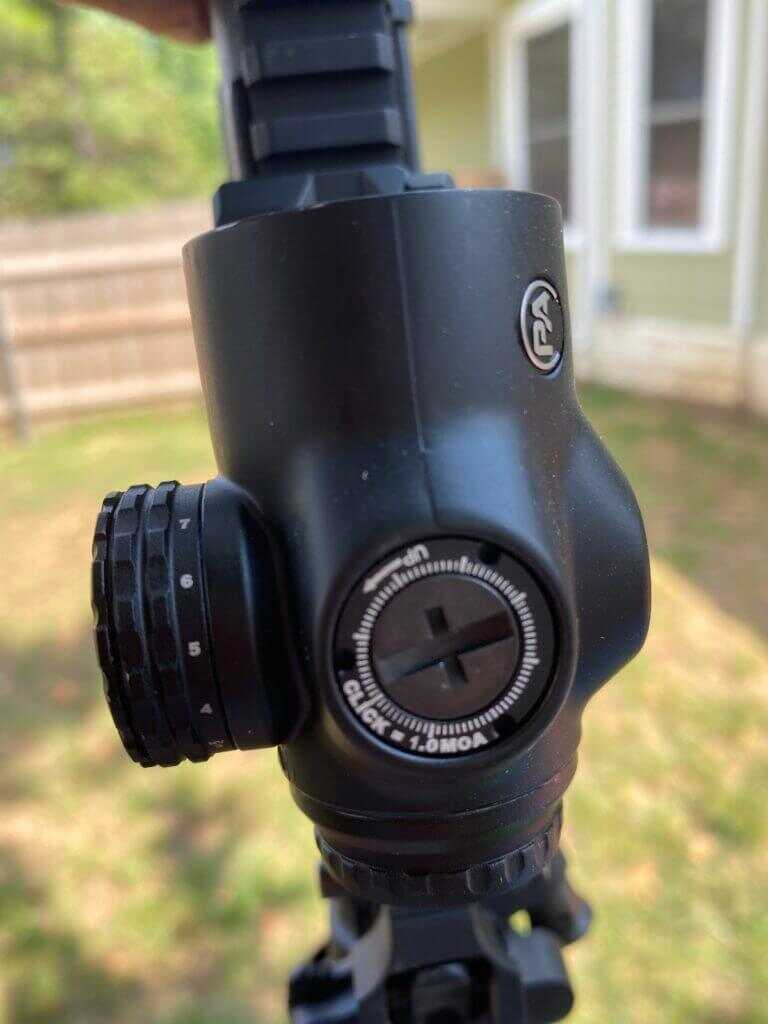
That being said, I jumped at the chance to cover the new SLx MicroPrism. Prisms, in my opinion, are the weapon of choice for dire survival situations. The difference between a Prism and an electronic red dot is significant. What we commonly call a red dot is an electronic projection of a laser or light on a piece of glass. They are tough, and the batteries do last a long time, but ultimately they are reliant on electronic power. If you have no battery juice, your optic becomes a very expensive monocular with no magnification. Which is to say, useless.

A prism, for lack of a better term, is built like a 1x scope. The reticle is actually etched on the glass, which means it works battery or none. Like an illuminated scope, it does have a battery function that makes the reticle as bright as a red dot. But in dire circumstances, it does still give you an aiming point as any real scope would. The problem with prisms prior to this has been either lack of availability or exorbitant price.
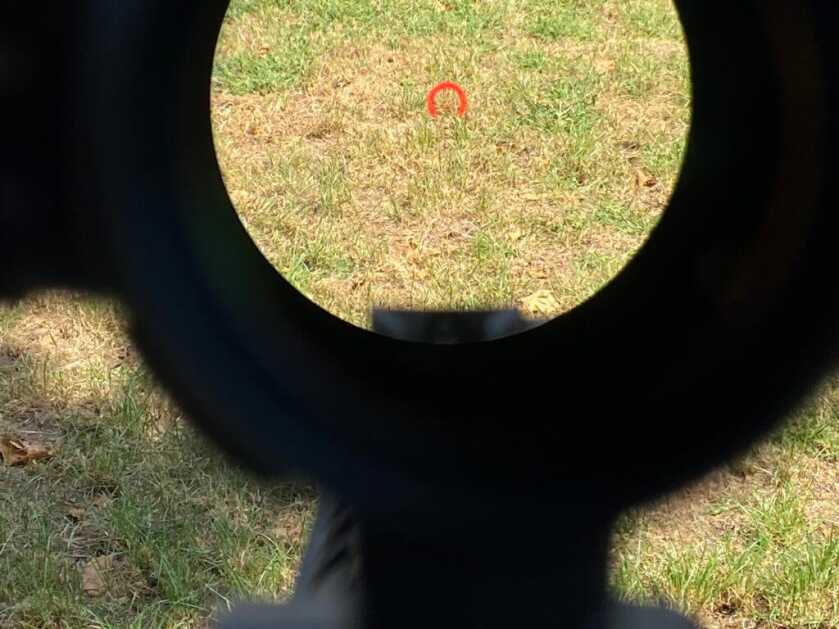
The only two I can remember on the market in recent memory are from Leupold and Elcan. The Leupold was a good optic but discontinued about 7 years ago. And the ELCAN will break your heart if you price it. It was SOCOM issue, so I have firsthand experience with it. The 1x to 4x throw lever for magnification briefs well but presented problems. We found in testing (long after fielding), that the prism didn’t always snap fully into place, which meant your zero was WAY off, and I wouldn’t take one if you gave it to me. And I certainly wouldn’t pay $2800 for it, even in Monopoly money.
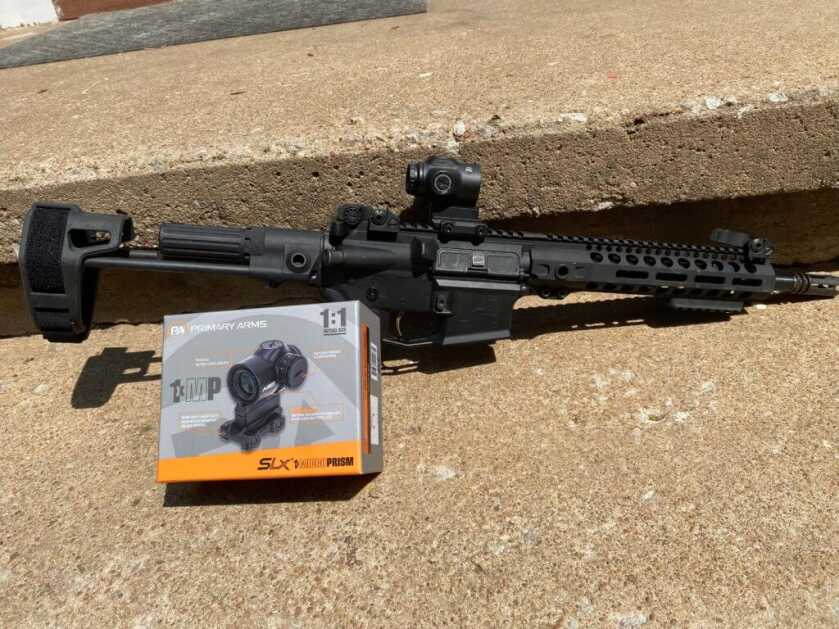
This brings us to the Primary Arms SLx MP. At a price of $249, you get a very robust, very useful prismatic reflex sight. It is remarkably well built, a kind of quality you can feel. In testing by Primary, it survived 7000 rounds on a SCAR 17 (7.62x51mm), which is a notoriously hard recoiling weapon. Putting this optic on gives you almost all the benefits of a red dot, with none of the weaknesses.
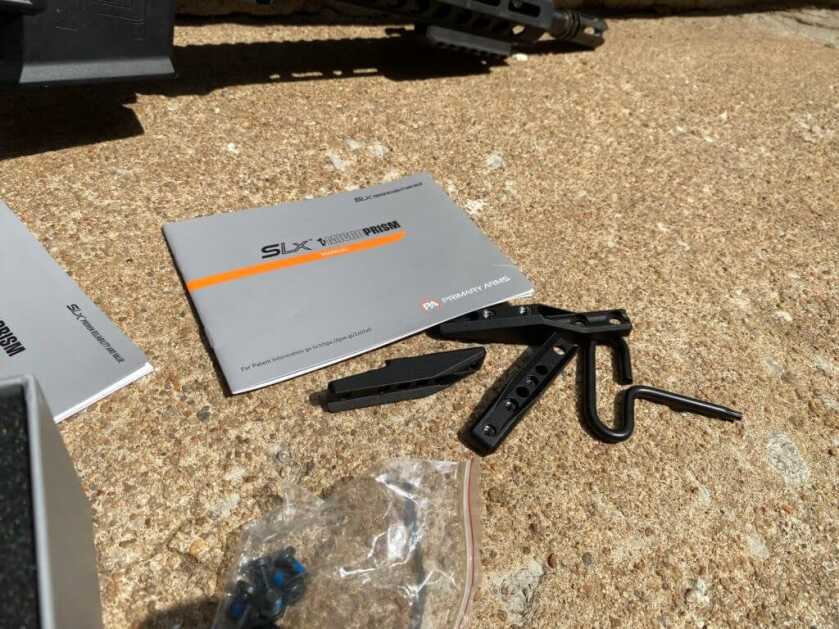
First, this is a hard optic to judge handholding it. Like a real scope, it doesn’t quite feel right if you just try and look through it freehand. You might see some scope shadow creeping in, as this is built like a scope. But not to worry. The moment you mount it to a rifle, all of that goes away. Primary Arms has built in a very forgiving eye box, and is attached to some Picatinny, you won’t even notice. One point here, about a prism vs a true no parallax red dot. Could you find yourself in such an awkward position, such as short stocking a rifle, that the scope shadow is a factor? Yes, possibly. But despite what modern rifle training will tell you, that is exceedingly rare to have to do. For all normal shooting conditions, the prism is indistinguishable from a red dot.

And then we have the advantages unique to a prism, in addition to the battery bit. Some people with astigmatism cannot see a red dot well. Even if they can see it, it may look oddly shaped. Not so with an etched reticle. An etched reticle is also cleaner, which makes it useful for something besides a simple dot. While some electronic pure optics have tried a complex BDC reticle, it has never really worked out. Enter the Cyclops 2 for the SLx series.

The Cyclops 2 is a Ballistic Drop Compensating reticle, developed in-house by Primary Arms. Normally I am against a BDC reticle for precision work, as it isn’t as accurate as a mildot reticle. On a 1x, however, I will readily acknowledge the BDC is the better choice. None of us see well enough at range to make mil dots superior in this case, and a BDC is going to be “close enough” as we say in the business. The Cyclops 2 is also unique in that it was engineered to work on a wide variety of calibers and barrel lengths. 5.56 from a 16”,14.5”, or 10.5”, as well as 7.62×39, 308, and 300 AAC. In testing, mine was dead on to the chart for a 10.5 pushing a 55-grain bullet at 300 yards.
The SLx MP is an absolute bargain at $249, and I recommend you grab one while the grabbing is good. This is a great value optic and given the supply chain so far this year, probably going to be in short supply. You can also look forward to some long-term durability testing on mine over the next year because I’m not sending it back. And that is the strongest endorsement I know how to give.
Visit Primary Arms to learn more about the SLx MicroPrism.


Clay shows a pic about halfway down the page of what’s in the box. You get enough fasteners and blocks to configure it several at different heights (either cantilevered or straight). Aluminum threads on mine are helicoiled which is a nice touch. I have the 3x microprism version and have been happy, although it’s only got ~300-400 5.56 rounds on it. Mine also has a shake-awake feature which is believe is standard.
I tried one, but returned it. Heavy and reticle is so small you can’t differentiate between the top of the arrow and the underside, which defeats the purpose of having one.
I have astigmatism so I wanted this to do well, but didn’t cut it for me. Maybe they’ll offer something better in the future.
Your thoughts on the various Spitfires?
I still prefer my Eotech but I’m getting used to this and enjoying it. I’m slower up close but more accurate at 100 plus. PA is putting out good stuff…I really like my 2x and hope to see you test their new 1-8 compact.
“…prefer my Eotech”?
Are you freaking kidding me?
Would you be talking about the same Eotech that systematically defrauded the DoD and endangered the lives of the brave fighting men in our armed services and law enforcement agencies?
See: U.S. v. L-3 Communications EOTech Inc., 15-cv-09262) in US District Court, Southern District of New York (Manhattan.
And forget about Zeiss… They went all-in woke.
For my money, nothing beats all-America made Trijicon and Nighforce optics.
Cheers!
Clay – Where is it made?
China.
Primary Arms is a company out of Houston, but they have their optics made overseas. Some of their higher priced stuff is made in other east Asian countries.